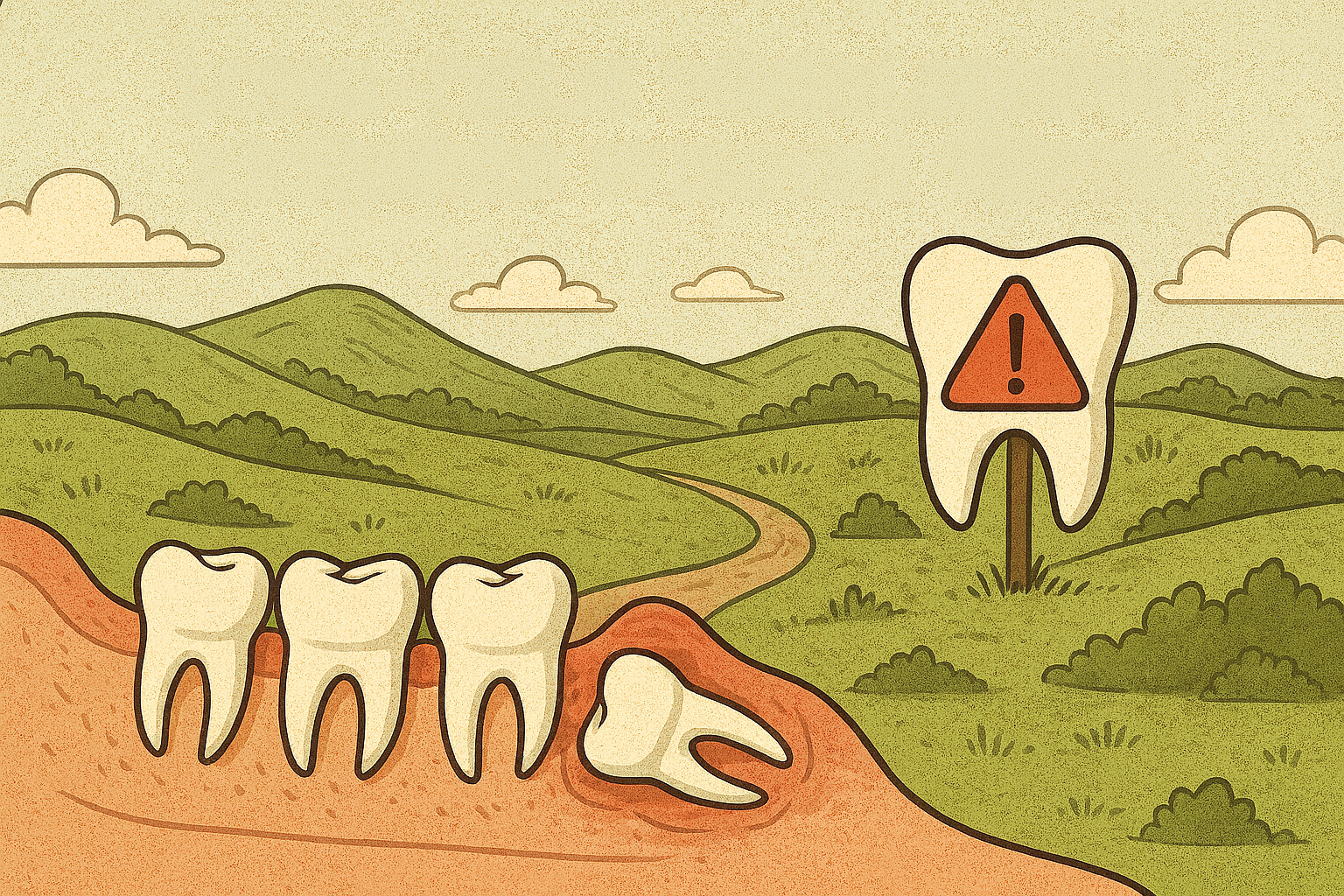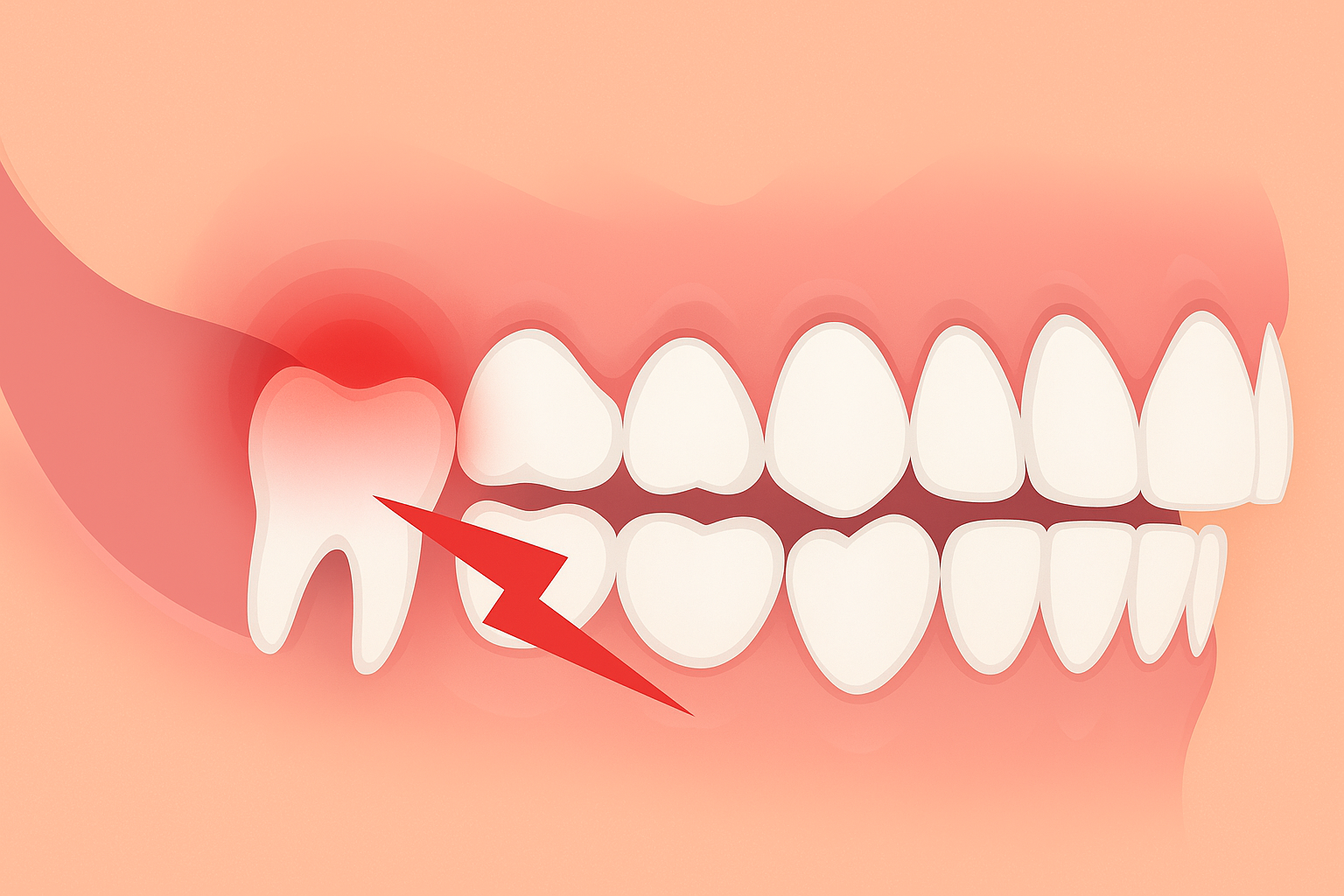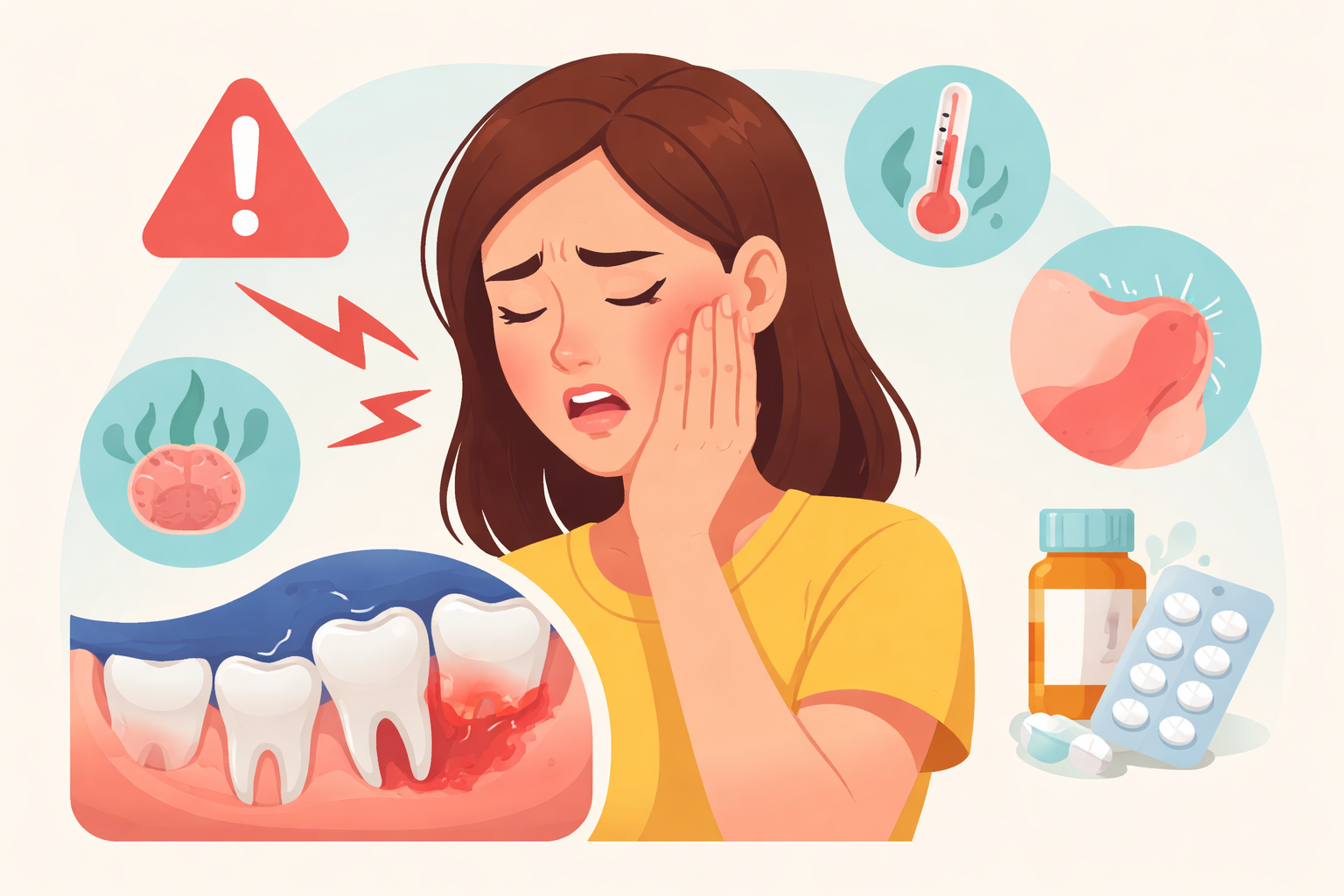Impacted Wisdom Teeth Symptoms You Shouldn’t Ignore

Wisdom teeth—your third molars—are the last set of teeth to erupt, usually between ages 17 and 25. But here’s the thing: sometimes they don’t come in properly. When they don’t have enough room to emerge or develop normally, they become impacted.
An impacted wisdom tooth doesn’t just sit quietly. It can cause pain, infections, and even damage to nearby teeth or bone. Knowing the symptoms of impacted wisdom teeth can save you from bigger oral health issues later.
😖 Common Signs of Impacted Wisdom Teeth
Let’s break down the red flags your mouth might be waving:
1. Persistent Jaw Pain or Stiffness
Feeling a dull ache or pressure near the back of your jaw? That could be an impacted wisdom tooth pushing against nerves or bone. This pain might even radiate toward your ear or neck.
2. Swollen or Bleeding Gums
Inflammation is your body’s natural response to irritation. If your gums around the back molars are swollen, red, or bleeding—don’t ignore it.
3. Bad Breath or a Foul Taste
When wisdom teeth are partially erupted or impacted, they create tiny pockets where bacteria can thrive. The result? Persistent bad breath or a nasty taste in your mouth.
4. Difficulty Opening Your Mouth
This can be a sign of infection or swelling near your jaw joint, sometimes caused by impacted teeth applying pressure from below.
5. Headaches or Sinus Issues
Believe it or not, impacted upper wisdom teeth can lead to sinus pain and pressure. If you’re battling headaches or nasal discomfort with no clear cause, your teeth might be the culprit.
Learn more about the signs you need your wisdom teeth removed before the symptoms worsen.
🧠 Why Do Wisdom Teeth Get Impacted in the First Place?
Here are a few common causes:
- Not enough space in the jaw
- Teeth growing at odd angles
- Genetic factors like jaw size and shape
- Delayed eruption
Sometimes, even if you feel fine, your dentist might spot impaction on an X-ray. That’s why regular checkups matter.
🔄 Types of Impaction You Should Know
There’s more than one way a wisdom tooth can go rogue:
- Mesial impaction – Tooth angled toward the front of the mouth
- Distal impaction – Angled toward the back of the mouth
- Vertical impaction – Tooth is upright but stuck below the gums
- Horizontal impaction – Lying sideways, pushing against nearby teeth
Each type requires different approaches to treatment.
⏳ What Happens If You Ignore Impacted Wisdom Teeth?
Spoiler alert: It doesn’t end well.
Leaving impacted wisdom teeth untreated can lead to:
- Infections
- Cysts or tumors
- Gum disease
- Tooth decay
- Damage to adjacent teeth
Waiting can turn a simple removal into a more complex—and expensive—oral surgery.
🩺 What to Expect When Getting Impacted Wisdom Teeth Removed
Feeling nervous about oral surgery? Totally normal.
Here’s what the typical process looks like:
- Consultation & Imaging – Your oral surgeon reviews X-rays or 3D scans.
- Sedation Options – You’ll choose between local anesthesia, IV sedation, or general anesthesia.
- The Procedure – The surgeon removes the teeth and closes the site with stitches.
- Recovery – You’ll need a few days off to rest, eat soft foods, and follow care instructions.
Check out this complete guide on what to expect when getting your wisdom teeth removed.
💰 No Insurance? Here’s What You Can Do
Worried about the cost of wisdom tooth removal without dental insurance? You’re not alone.
Fortunately, some clinics offer:
- Payment plans
- Financing options
- Discounted rates for cash payments
Read this helpful post about getting wisdom teeth removed without insurance in Florida for practical tips and guidance.
⚠️ When Not All Wisdom Teeth Need Removal
Surprise! Not all wisdom teeth need to go. In some cases, they come in straight, healthy, and fully erupted—causing no problems at all.
So how do you know if removal is necessary? Your dentist or oral surgeon will weigh:
- The position of the tooth
- Gum and bone health
- Likelihood of future issues
Learn more about why wisdom teeth don’t always need removal and how to know when to leave them alone.
👨⚕️ How Dentists Diagnose Impacted Teeth
It all starts with:
- X-rays or panoramic imaging
- Oral exam
- Symptom checklist
If your dentist suspects impaction, they'll likely refer you to a specialist for further evaluation.
📅 When to See an Oral Surgeon
Book an appointment if you experience:
- Recurring jaw or gum pain
- Swelling that doesn’t go away
- Pain while chewing or talking
- Frequent headaches or earaches
- Visible tooth crowding
Early evaluation can prevent more serious problems down the line.
📋 Tips to Prevent Complications
If you're not ready to have your wisdom teeth removed just yet, stay proactive:
- Brush and floss carefully around back molars
- Use antibacterial mouthwash
- Avoid hard or sticky foods
- See your dentist every 6 months
🧠 Final Thoughts: Don’t Ignore the Warning Signs
Impacted wisdom teeth often start with subtle symptoms—until they become major dental problems. Listening to your body, paying attention to red flags, and seeing your dentist early can save you pain, stress, and money.
Don’t wait until you're doubled over in pain or dealing with a swollen jaw. If you’re seeing the signs, it’s time to act.

Wisdom Tooth Removal and Sinus Issues: What’s Really Going On?
December 25, 2025

Long-Term Problems of Retained Wisdom Teeth
December 12, 2025

Why Wisdom Tooth Pain Can Spread to Your Front Teeth
December 9, 2025

When Wisdom Tooth Pain Is an Emergency (and When It Can Wait)
January 1, 2026

What to Eat After Wisdom Teeth Removal: A Complete Recovery Guide
November 26, 2025